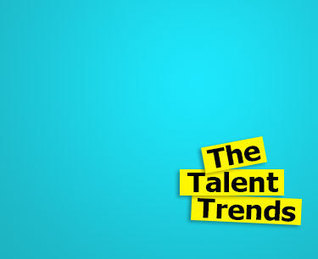 Your new post is loading...
 Your new post is loading...
You’ve entered a world of perpetually unfinished business. Meetings end without resolution; discussions start and then stop without clear next steps; work is plagued by mistakes; miscommunications need to be clarified; and issues weigh on your mind because they are always partially addressed, but never fully resolved. This pattern can convert even the most talented individual leader into a mediocre performer who stays busy, but not productive. To address your manager’s dilemma: Hone in on your distinctive contribution and be selective with the projects and priorities you accept. How you approach this subtle challenge has a great impact on your performance. You cannot make progress on the priorities that matter by changing superficial behaviors — for instance, by keeping to-do lists or sorting your email differently.
Via The Learning Factor
We spend an awful lot of time in school throughout our lifetimes, diligently studying and cramming and writing exams, all in the quest to be more intelligent human beings.
How how much time do you spend on your emotional intelligence? If you're like the average human being, the answer is probably: "Um, not much."
That's too bad, because according to researchers from Rutgers, there are 19 different ways emotional intelligence contributes to the bottom line in any work organization. Emotional intelligence guides our ability to deal with others; to understand their emotions, as well as our own.
Via The Learning Factor
Workplace stress — such as long hours, job insecurity and lack of work-life balance — contributes to at least 120,000 deaths each year and accounts for up to $190 billion in health care costs, according to new research by two Stanford professors and a former Stanford doctoral student now at Harvard Business School.
“If employers are serious about managing the health of their workforce and controlling their health care costs, they ought to be worried about the environments their workers are in,” says Jeffrey Pfeffer, a Stanford professor of organizational behavior. Pfeffer, with colleagues Stefanos A. Zenios of Stanford GSB and Joel Goh of Harvard Business School, conducted a meta-analysis of 228 studies, examining how 10 common workplace stressors affect a person’s health.
Via The Learning Factor
Wasting time can be a great thing. Taking breaks and indulging in distractions gives your body and brain a chance to refresh and actually increases your output over the long haul. Study after study proves this.
The problem isn't when you decide to kick back. The problem is when you waste time without even realizing that's what you're doing. Spinning your wheels--engaging in pointless activities that don't help you move your company or your life forward--eats through your mental resources, frustrates your need for accomplishment, and is generally a short and sure route to burnout.
So what are these insidious activities that feel potentially important but are actually pretty worthless? The Web offers plenty of thoughtful suggestions, from the false productivity hack (that actually costs you time) to various forms of vanity and emotional drama that simply sap your energy. Here's a roundup.
Via The Learning Factor
The image is from cartoonist Hugh MacLeod, who came up with such a brilliant way to express a concept that’s often not that easy to grasp.
The image makes a clear point—that knowledge alone is not useful unless we can make connections between what we know. Whether you use the terms “knowledge” and “experience” to explain the difference or not, the concept itself is sound.
Lots of great writers, artists and scientists have talked about the importance of collecting ideas and bits of knowledge from the world around us, and making connections between those dots to fuel creative thinking and new ideas.
Via The Learning Factor
IN 1930, when the world was “suffering…from a bad attack of economic pessimism”, John Maynard Keynes wrote a broadly optimistic essay, “Economic Possibilities for our Grandchildren”. It imagined a middle way between revolution and stagnation that would leave the said grandchildren a great deal richer than their grandparents. But the path was not without dangers. One of the worries Keynes admitted was a “new disease”: “technological unemployment…due to our discovery of means of economising the use of labour outrunning the pace at which we can find new uses for labour.” His readers might not have heard of the problem, he suggested—but they were certain to hear a lot more about it in the years to come.
Via The Learning Factor
|
the only things many companies actually do under the heading of people development is to have an annual training-hours target and a travel budget for sending employees to conferences. If managers really thought that people were their greatest asset and that it’s the energy and creativity of employees that drives innovation, why do companies do so little? Why doesn’t growing and developing people excite them just as much as installing new additive manufacturing equipment or the latest cloud-based collaboration tool?Click here to edit the content
Via The Learning Factor
It's virtually impossible to imagine life without learning. We come into the world armed with little more than a bunch of primitive survival instincts, but it’s thanks to our ability to learn that we start adapting to the environment, going from helpless infants into semi-autonomous children before maturing into young adults. Still, when it comes to how we learn, most of us differ considerably at every stage in that process. Now scientists are learning more about that variation and what's behind it. Psychologists have studied learning for over a century, but research in this area has really taken off in the last two decades. Most studies indicate that our personalities largely determine the ways we like to learn. In other words, who we are shapes how we learn. Here's what some of the latest research has uncovered about the most common learning styles and the ways we can learn to our fullest potential.
Via The Learning Factor
Human resource managers are currently embracing talent analytics like never before. Companies are evaluating and analysing raw data to derive valuable insights which are helping them to hire the right talent, retain them as well as help them learn and grow internally.
Talent analytics takes into account all the data, rather than limited samples, so a full-fledged picture emerges. It looks for patterns in the data and discovers critical connections that might otherwise go unnoticed. Such data can be related to employees' pre-employment assessments to background checks to social media profiles.
Via The Learning Factor
When the U.S. Bureau of Labor Statistics looks into its crystal ball, it sees an aging population in need of care and a construction industry still rebounding from the Great Recession. In the decade from 2012 to 2022, the fastest growth in U.S. employment will take place in the health care, health care support, construction, and personal care fields.
Via The Learning Factor
When it comes to hiring, more organizations are casting a wide net to find top talent. As such, they are incorporating technology into their recruiting processes.
It’s just not practical for companies to fly every potential candidate to their headquarters for an interview in person, so today’s job seekers need to be prepared for a recruiter to say the words "video interview." It can seem intimidating, especially if you’re not happy about the way you look on camera. But with these expert tips, you can learn to master the logistics of the video interview and spend your time focusing instead on wowing the company.
Via The Learning Factor
After working five years as a regional director at a large health insurer in Oakland, Calif., Daniel Eddleman felt ready to move up the ladder. So he found a mentor within the company who agreed with Mr. Eddleman that his performance and leadership ability merited the promotion. But he'd need to work on a few soft skills to clinch the job. "It can be a challenging environment to get noticed in because it's such a big organization," says Mr. Eddleman, who connected with a job coach who helped him identify and work on three weak areas—including the ability to self-assess, manage his emotions and brag.
Via The Learning Factor
|



 Your new post is loading...
Your new post is loading...































To pick the right priorities for your time, hone in on the things that allow you to deliver your best..